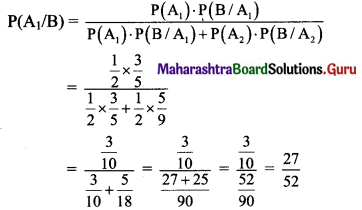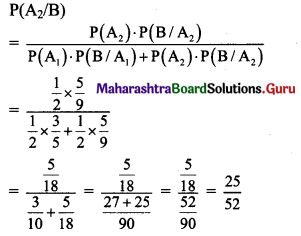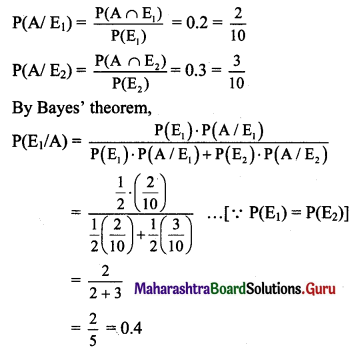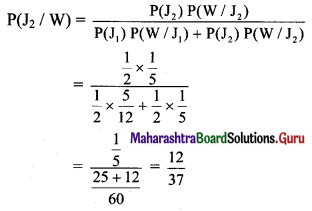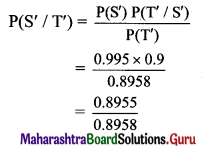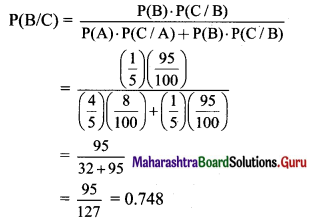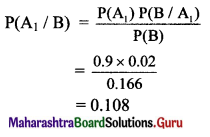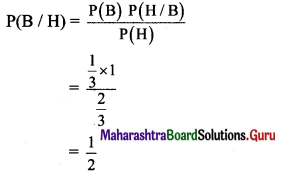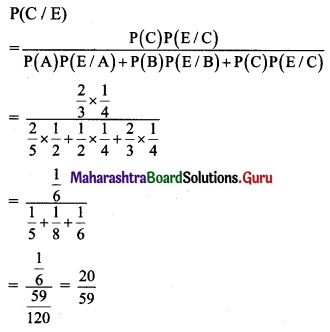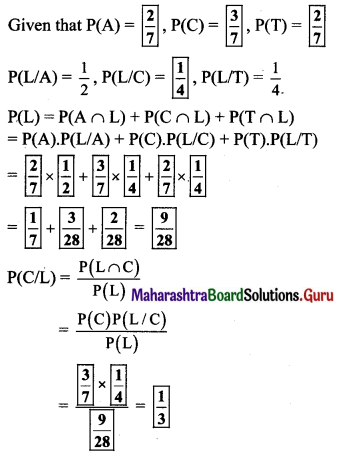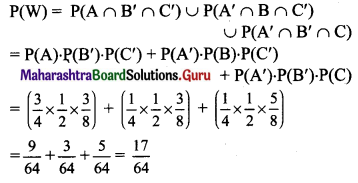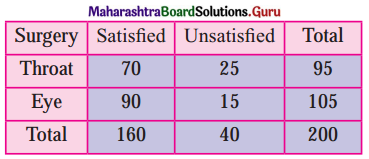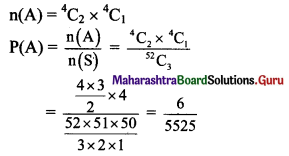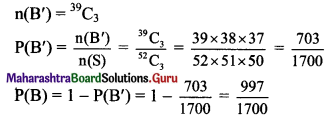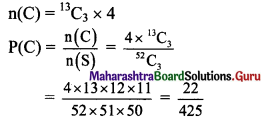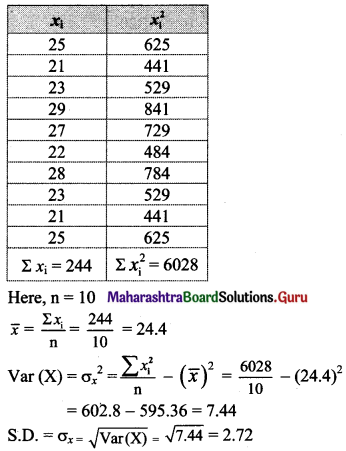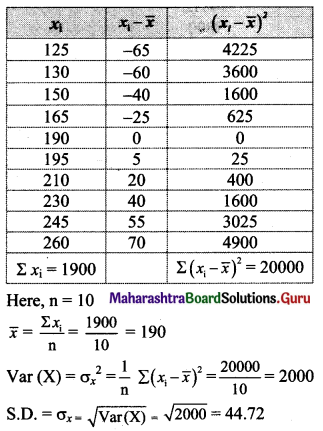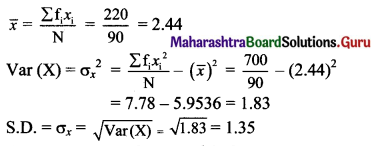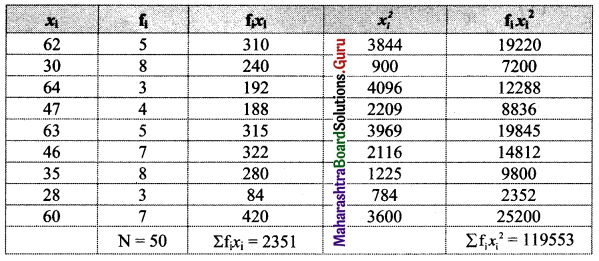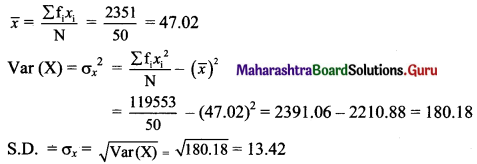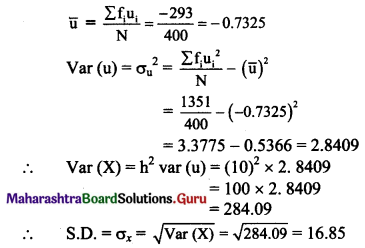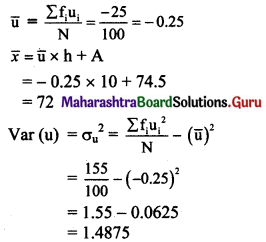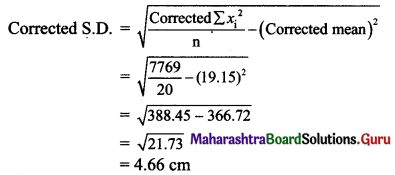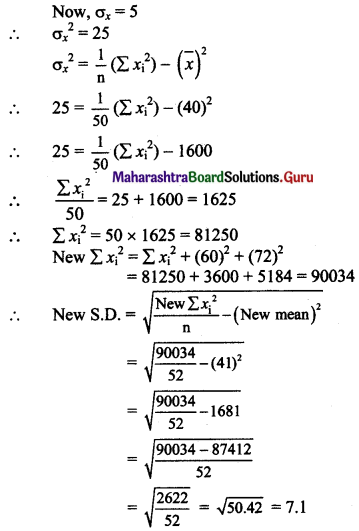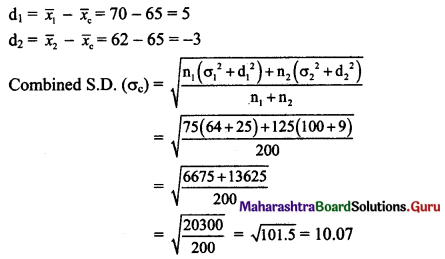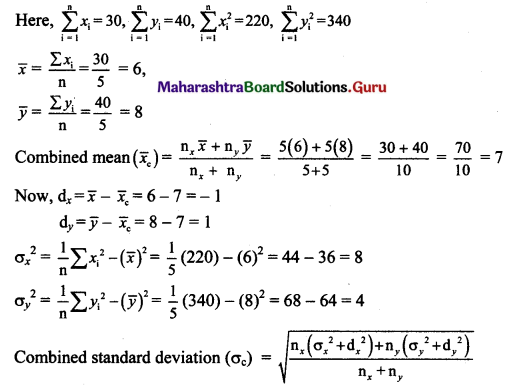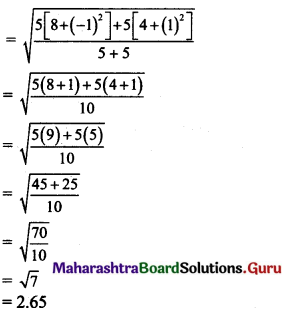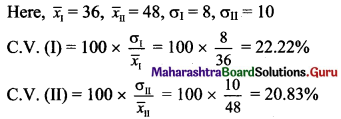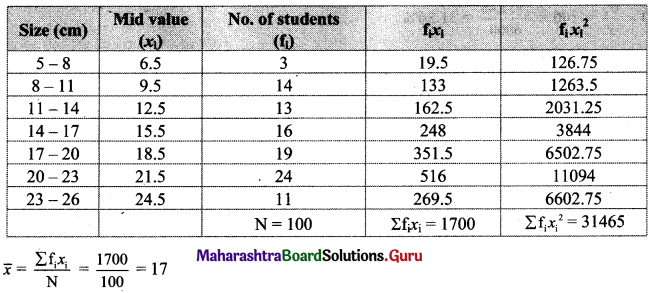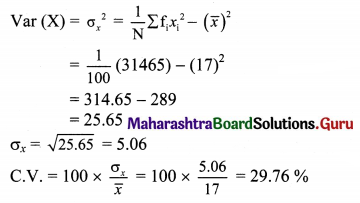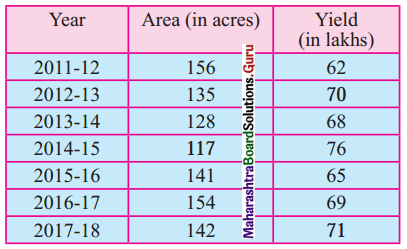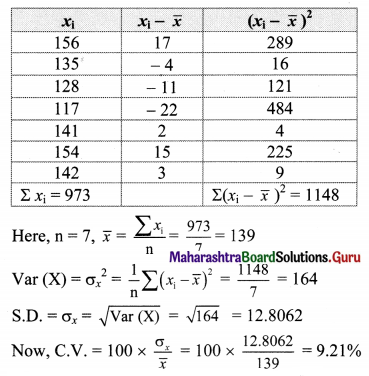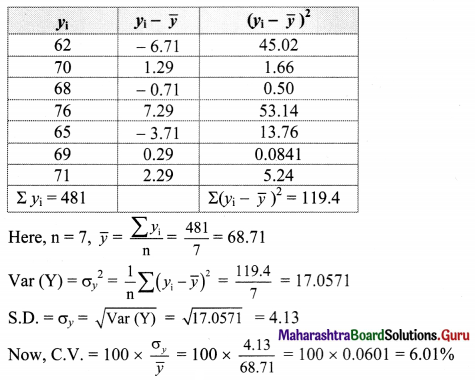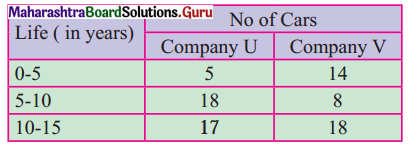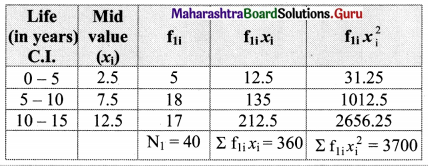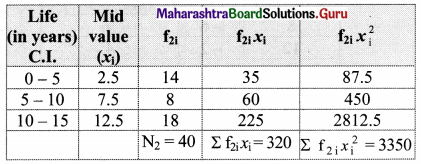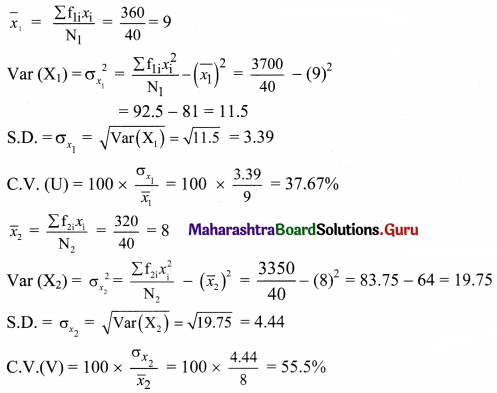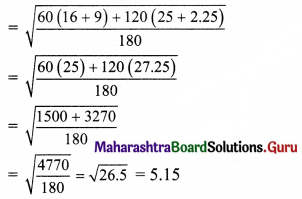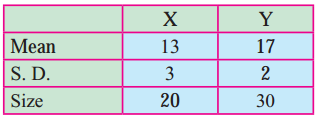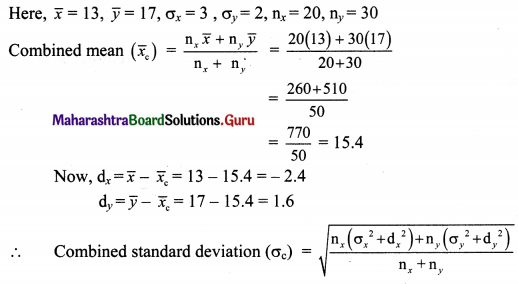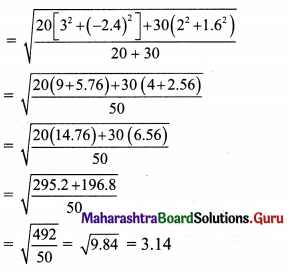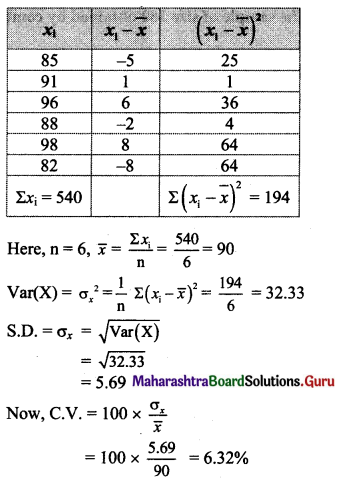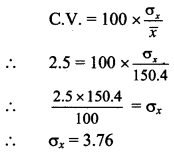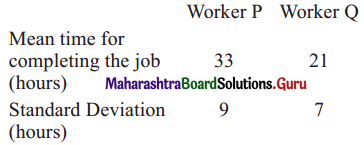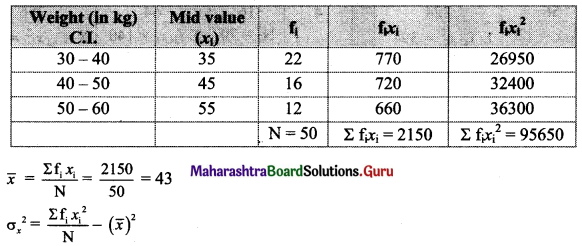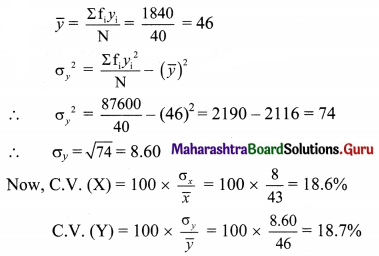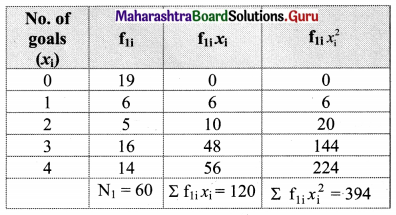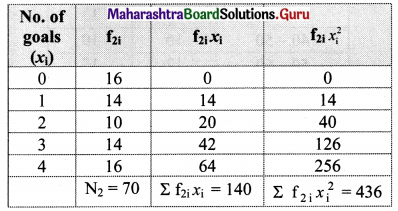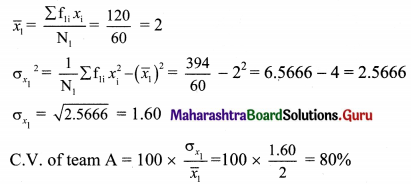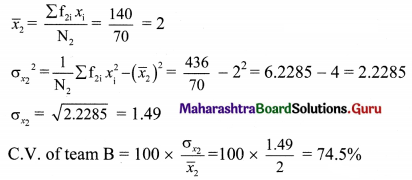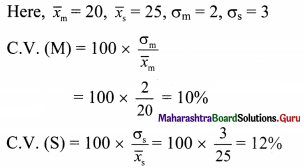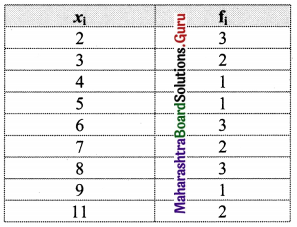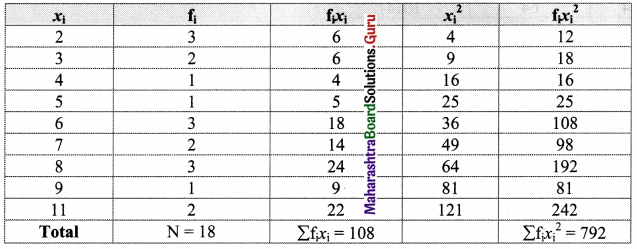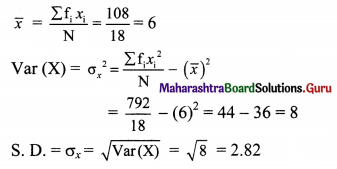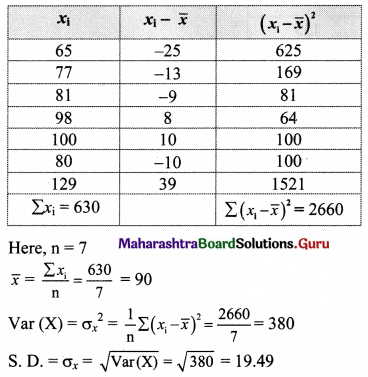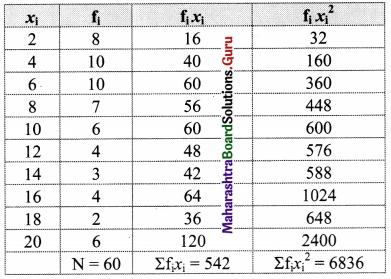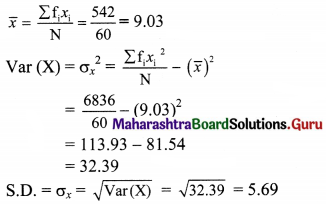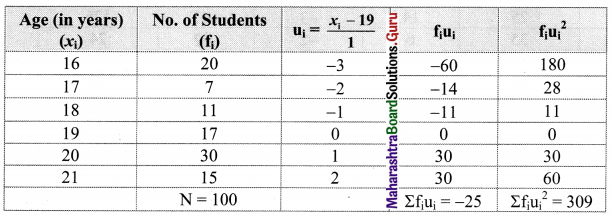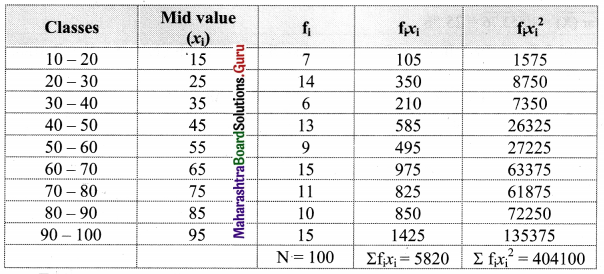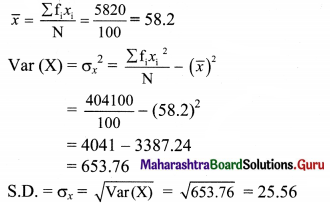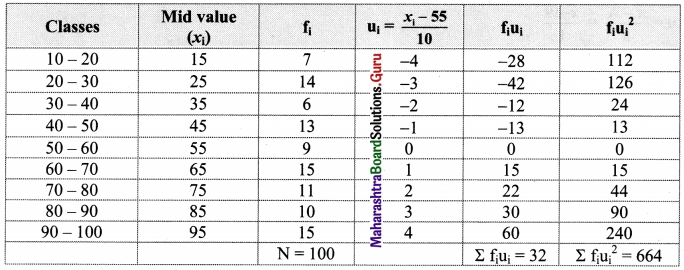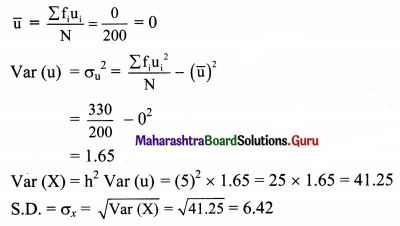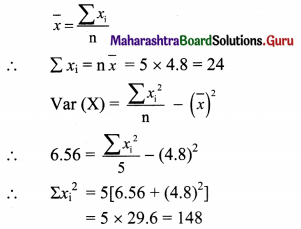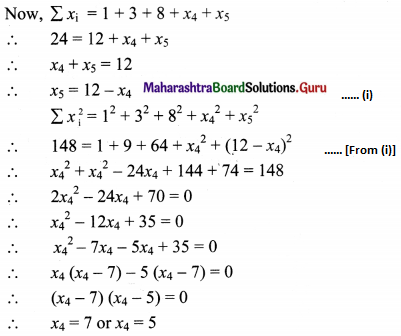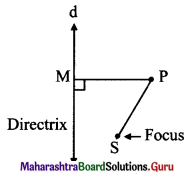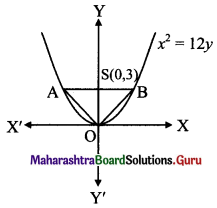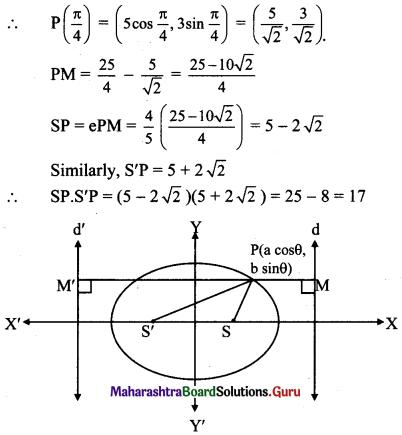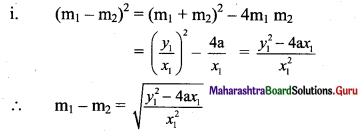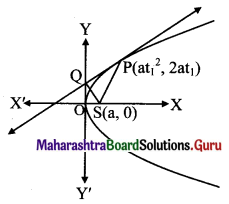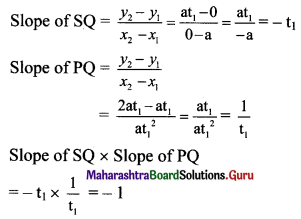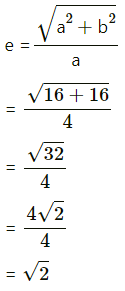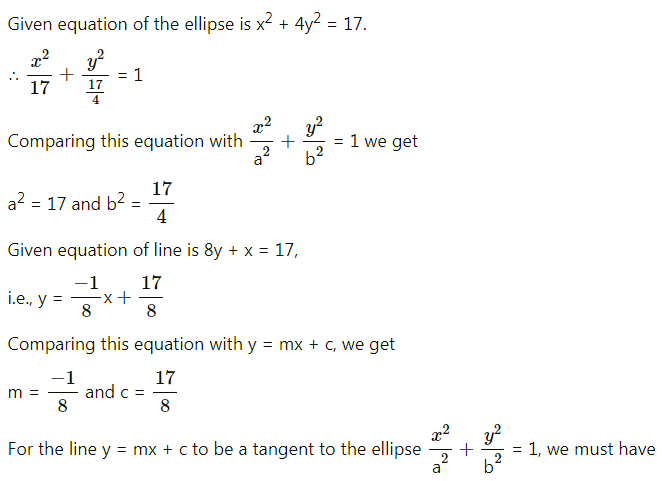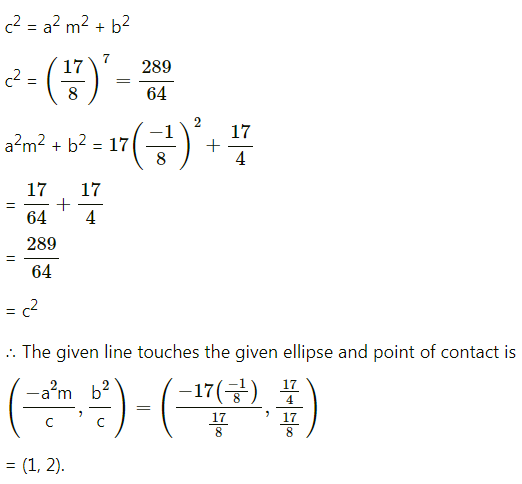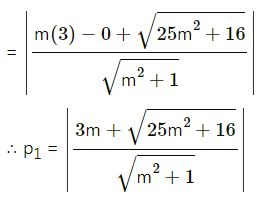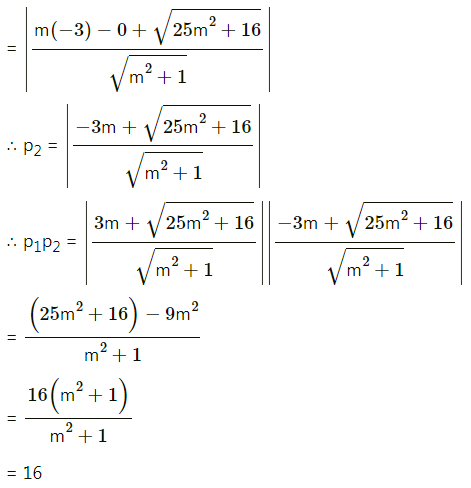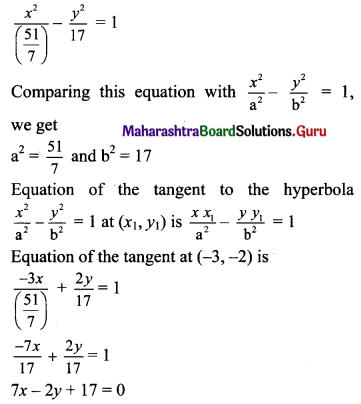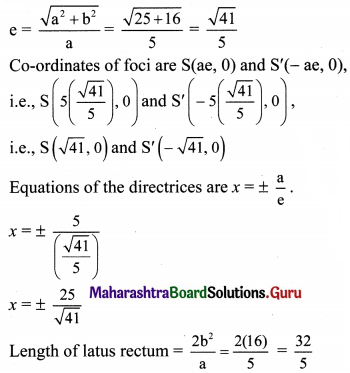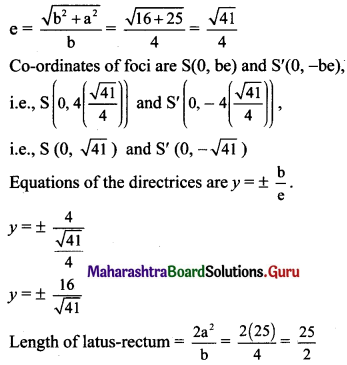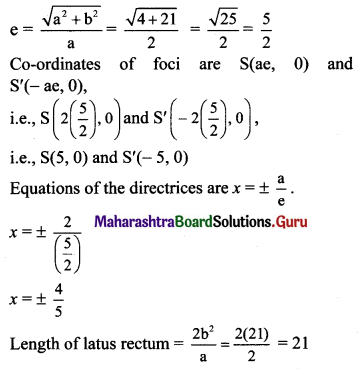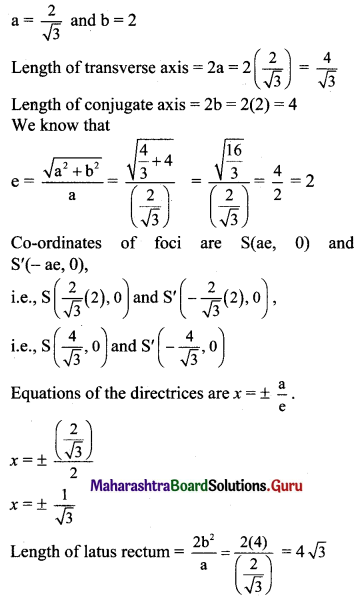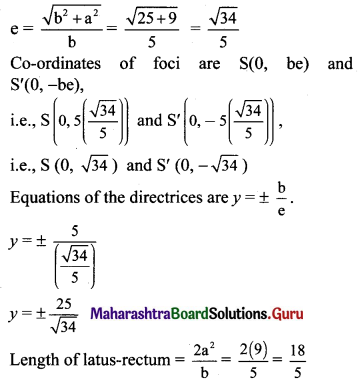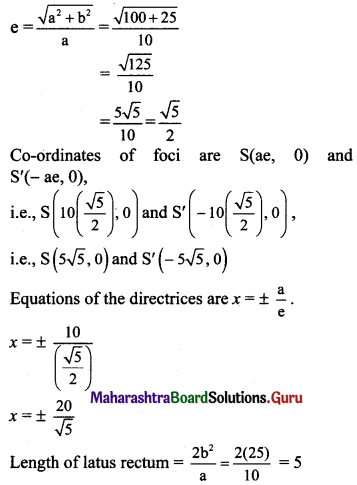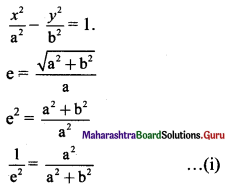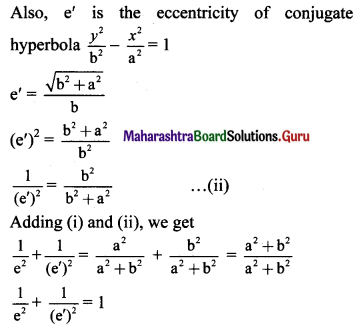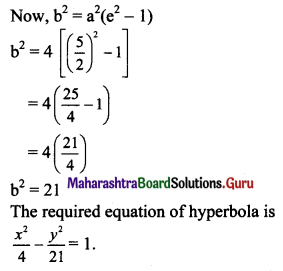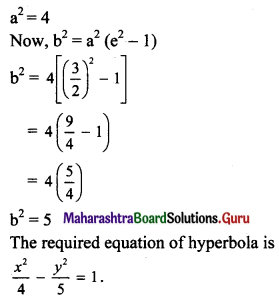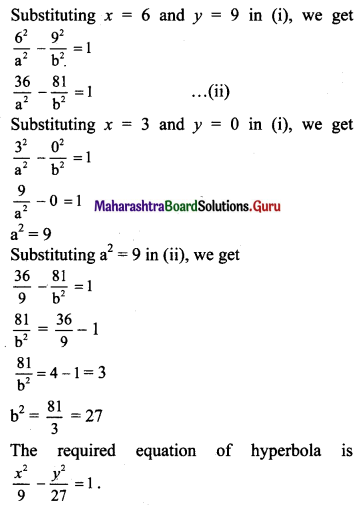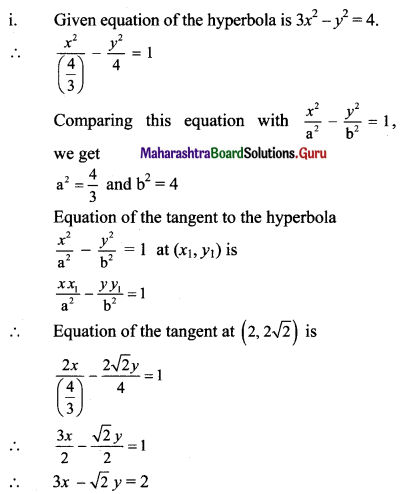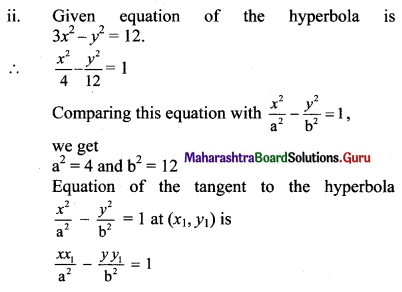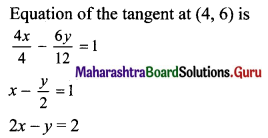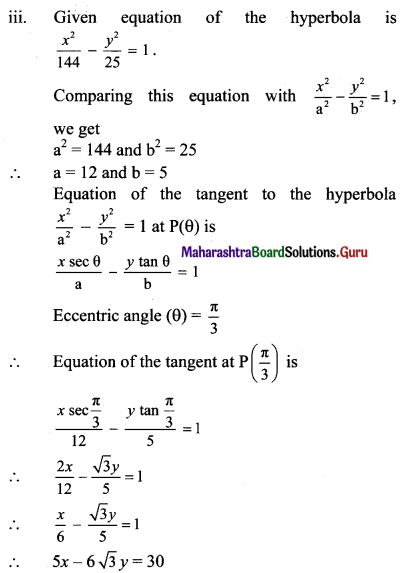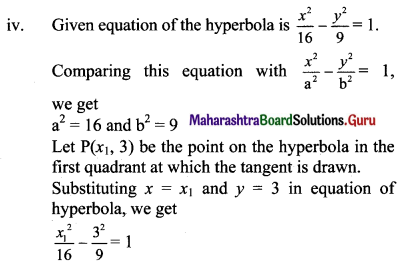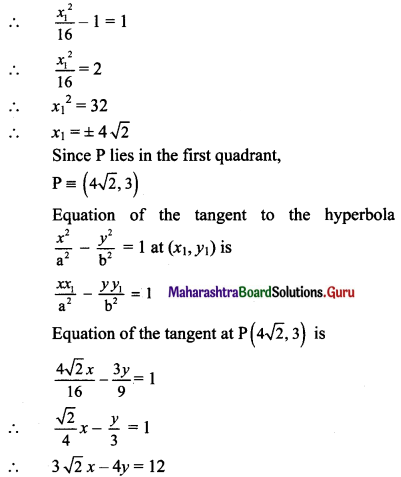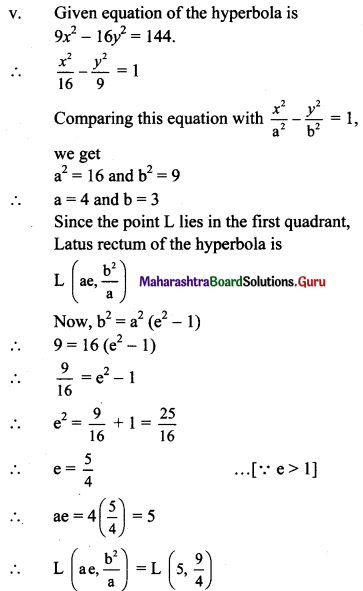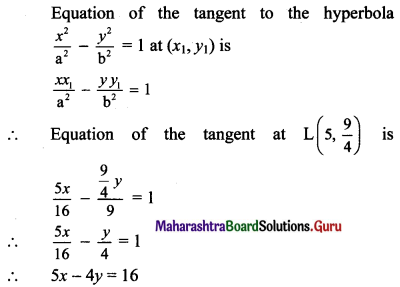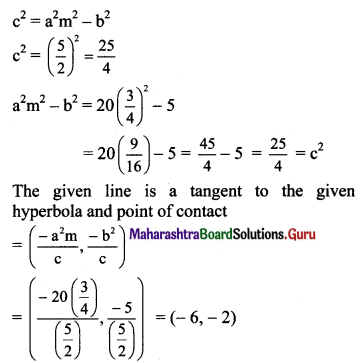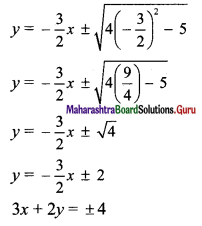Balbharti Maharashtra State Board Class 11 Maths Solutions Pdf Chapter 9 Probability Ex 9.5 Questions and Answers.
11th Maths Part 1 Probability Exercise 9.5 Questions And Answers Maharashtra Board
Question 1.
If odds in favour of X solving a problem are 4 : 3 and odds against Y solving the same problem are 2 : 3. Find the probability of:
(i) X solving the problem
(ii) Y solving the problem
Solution:
(i) Odds in favour of X solving a problem are 4 : 3.
∴ The probability of X solving the problem is
P(X) = \(\frac{4}{4+3}=\frac{4}{7}\)
(ii) Odds against Y solving the problem are 2 : 3.
∴ The probability of Y solving the problem is
P(Y) = 1 – P(Y’)
= 1 – \(\frac{2}{2+3}\)
= 1 – \(\frac{2}{5}\)
= \(\frac{3}{5}\)
![]()
Question 2.
The odds against John solving a problem are 4 to 3 and the odds in favour of Rafi solving the same problem are 7 to 5. What is the chance that the problem is solved when both of them try it?
Solution:
The odds against John solving a problem are 4 to 3.
Let event P(A’) = P (John does not solve the problem)
= \(\frac{4}{4+3}\)
= \(\frac{4}{7}\)
So, the probability that John solves the problem
P(A) = 1 – P(A’) = 1 – \(\frac{4}{7}\) = \(\frac{3}{7}\)
Similarly, Let P(B) = P(Rafi solves the problem)
Since the odds in favour of Rafi solving the problem are 7 to 5,
P(B) = \(\frac{7}{7+5}\) = \(\frac{7}{12}\)
Required probability
P(A ∪ B) = P(A) + P(B) – P(A ∩ B)
Since A, B are independent events,
P(A ∩ B) = P(A) . P(B)
∴ Required probability = P(A) + P(B) – P(A) . P(B)
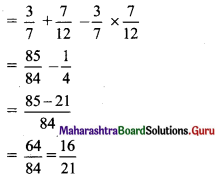
Question 3.
The odds against student X solving a statistics problem are 8 : 6 and odds in favour of student Y solving the same problem are 14 : 16. Find the chance that
(i) the problem will be solved if they try it independently.
(ii) neither of them solves the problem.
Solution:
The odds against X solving a problem are 8 : 6.
Let P(X’) = P(X does not solve the problem) = \(\frac{8}{8+6}\) = \(\frac{8}{14}\)
So, the probability that X solves the problem
P(X) = 1 – P(X’) = 1 – \(\frac{8}{14}\) = \(\frac{6}{14}\)
Similarly, let P(Y) = P(Y solves the problem)
Since odds in favour of Y solving the problem are 14 : 16,
P(Y) = \(\frac{14}{14+16}=\frac{14}{30}\)
So, the probability that Y does not solve the problem
P(Y’) = 1 – P(Y)
= 1 – \(\frac{14}{30}\)
= \(\frac{16}{30}\)
(i) Required probability
P(X ∪ Y) = P(X) + P(Y) – P(X ∩ Y)
Since X and Y are independent events,
P(X ∩ Y) = P(X) . P(Y)
∴ Required probability = P(X) + P(Y) – P(X) . P(Y)
= \(\frac{6}{14}+\frac{14}{30}-\frac{6}{14} \times \frac{14}{30}\)
= \(\frac{73}{105}\)
(ii) Required probability = P(X’ ∩ Y’)
Since X and Y are independent events, X’ and Y’ are also independent events.
∴ Required probability = P(X’) . P(Y’)
= \(\frac{8}{14} \times \frac{16}{30}\)
= \(\frac{32}{105}\)
![]()
Question 4.
The odds against a husband who is 60 years old, living till he is 85 are 7 : 5. The odds against his wife who is now 56, living till she is 81 are 5 : 3. Find the probability that
(i) at least one of them will be alive 25 years hence.
(ii) exactly one of them will be alive 25 years hence.
Solution:
The odds against her husband living till he is 85 are 7 : 5.
Let P(H’) = P(husband dies before he is 85) = \(\frac{7}{7+5}=\frac{7}{12}\)
So, the probability that the husband would be alive till age 85
P(H) = 1 – P(H’) = 1 – \(\frac{7}{12}\) = \(\frac{5}{12}\)
Similarly, P(W’) = P(Wife dies before she is 81)
Since the odds against wife will be alive till she is 81 are 5 : 3.
∴ P(W’) = \(\frac{5}{5+3}=\frac{5}{8}\)
So, the probability that the wife would be alive till age 81
P(W) = 1 – P(W’) = 1 – \(\frac{5}{8}\) = \(\frac{3}{8}\)
(i) Required probability
P(H ∪ W) = P(H) + P(W) – P(H ∩ W)
Since H and W are independent events,
P(H ∩ W) = P(H) . P(W)
∴ Required probability = P(H) + P(W) – P(H) . P(W)
= \(\frac{5}{12}+\frac{3}{8}-\frac{5}{12} \times \frac{3}{8}\)
= \(\frac{40+36-15}{96}\)
= \(\frac{61}{96}\)
(ii) Required probability = P(H ∩ W’) + P(H’ ∩ W)
Since H and W are independent events, H’ and W’ are also independent events.
∴ Required probability = P(H) . P(W’) + P(H’) . P(W)
= \(\frac{5}{12} \times \frac{5}{8}+\frac{7}{12} \times \frac{3}{8}\)
= \(\frac{25+21}{96}\)
= \(\frac{46}{96}\)
= \(\frac{23}{48}\)
![]()
Question 5.
There are three events A, B, and C, one of which must, and only one can happen. The odds against event A are 7 : 4 and odds against event B are 5 : 3. Find the odds against event C.
Solution:
Since odds against A are 7 : 4,
P(A) = \(\frac{4}{7+4}=\frac{4}{11}\)
Since odds against B are 5 : 3,
P(B) = \(\frac{3}{5+3}=\frac{3}{8}\)
Since only one of the events A, B and C can happen,
P(A) + P(B) + P(C) = 1
\(\frac{4}{11}\) + \(\frac{3}{8}\) + P(C) = 1
∴ P(C) = 1 – (\(\frac{4}{11}\) + \(\frac{3}{8}\))
= 1 – \(\left(\frac{32+33}{88}\right)\)
= \(\frac{23}{88}\)
∴ P(C’) = 1 – P(C)
= 1 – \(\frac{23}{88}\)
= \(\frac{65}{88}\)
∴ Odds against the event C are P(C’) : P(C)
= \(\frac{65}{88}\) : \(\frac{23}{88}\)
= 65 : 23
Question 6.
In a single toss of a fair die, what are the odds against the event that number 3 or 4 turns up?
Solution:
When a fair die is tossed, the sample space is
S = {1, 2, 3, 4, 5, 6}
∴ n(S) = 6
Let event A: 3 or 4 turns up.
∴ A = {3, 4}
∴ n(A) = 2
∴ P(A) = \(\frac{n(A)}{n(S)}\) = \(\frac{2}{6}=\frac{1}{3}\)
P(A’) = 1 – P(A) = 1 – \(\frac{1}{3}\) = \(\frac{2}{3}\)
∴ Odds against the event A are P(A’) : P(A)
= \(\frac{2}{3}: \frac{1}{3}\)
= 2 : 1
![]()
Question 7.
The odds in favour of A winning a game of chess against B are 3 : 2. If three games are to be played, what are the odds in favour of A’s winning at least two games out of the three?
Solution:
Let event A: A wins the game and event B: B wins the game.
Since the odds in favour of A winning a game against B are 3 : 2,
the probability of occurrence of event A and B is given by
P(A) = \(\frac{3}{3+2}=\frac{3}{5}\) and P(B) = \(\frac{2}{3+2}=\frac{2}{5}\)
Let event E: A wins at least two games out of three games.
∴ P(E) = P(A) . P(A) . P(B) + P(A) . P(B) . P(A) + P(B) . P(A) . P(A) + P(A) . P(A) . P(A)

∴ Odds in favour of A’s winning at least two games out of three are P(E) : P(E’)
= \(\frac{81}{125}: \frac{44}{125}\)
= 81 : 44
11th Maths Book Solutions State Board
